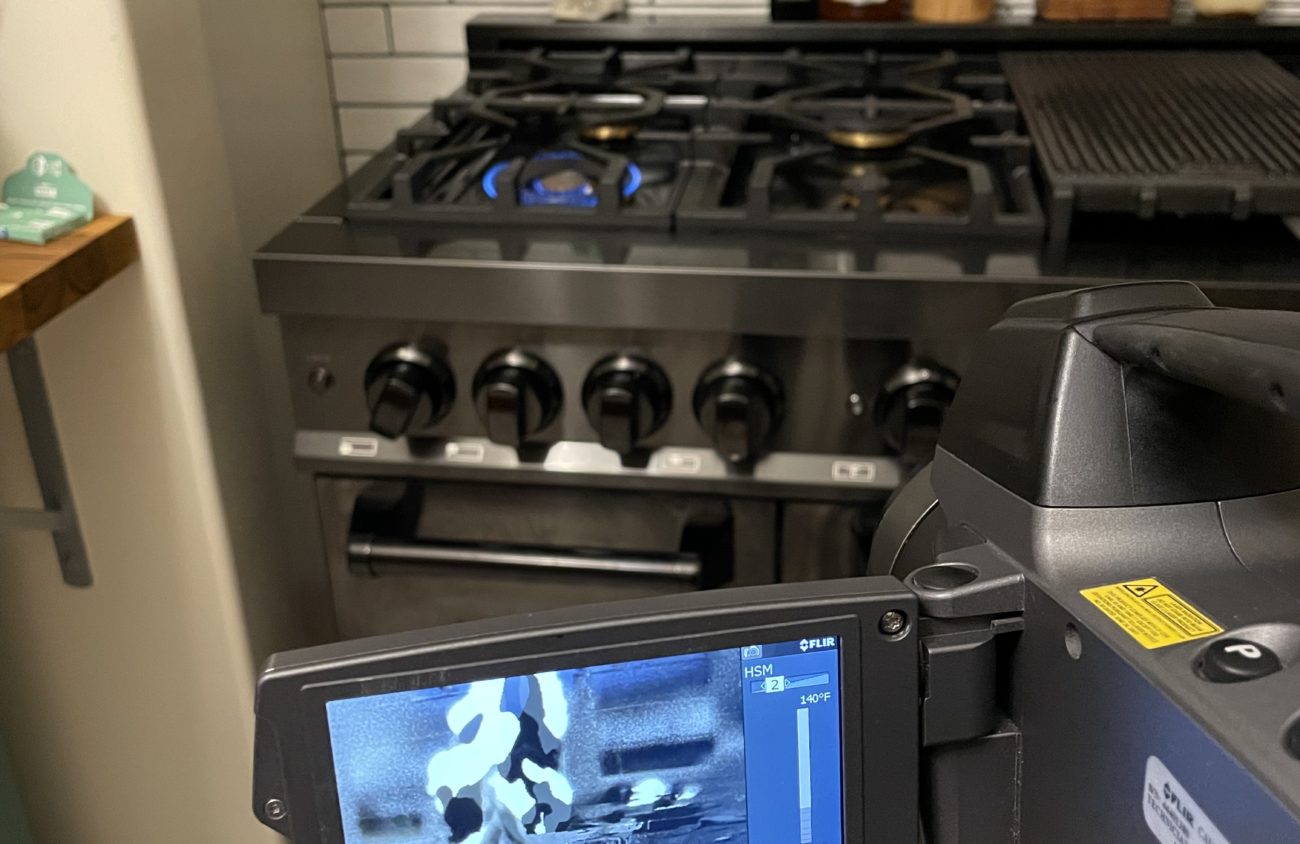If you cook with a gas stove it’s easy to see its perks. You can see how high you’ve set the heat, and it’s easy to understand how to adjust the flames to ensure you’re not burning your dinner.
What you can’t see is what’s causing problems.
Beyond Toxics, a Eugene-based environmental justice nonprofit, explains that gas stoves can “emit air pollutants such as nitrogen dioxide, carbon monoxide and particulate matter” as well as methane that is harmful to human health at high exposure. But these gases are invisible to the naked eye, which can make it challenging to illustrate the danger that they pose.
Lately, gas appliances have sparked controversy about whether or not they are actually dangerous.
“We decided that we needed good, reliable data that could help people visualize the problem,” says Lisa Arkin, Beyond Toxics executive director. “Because we all have lived in homes or apartments that had gas stoves, and we just assume that what we see is what we get.”
Beyond Toxics brought a FLIR camera (Forward Looking InfraRed) to multiple residential homes to show what’s happening when someone uses a gas stove. In the footage available on the nonprofit’s website, the camera allows you to see that above the flame there is a plume of gas.
Environmental Justice Projects Manager Alyssa Rueda says that while some houses had fans above their burners, usually the fans weren’t effective at pulling the gases up and out of the space. Some houses had industrial hoods which were much better at sucking up the gas, but other houses had no fans at all. And to the team’s surprise, preheated ovens that were opened also released copious amounts of gas into the space, often right into the breathing face of whoever opened the oven.
The team recorded increases in nitrogen dioxide (NO2) and volatile organic compounds (VOCs) when gas stoves and gas ovens were used. Mason Leavitt, GIS and spatial data coordinator for Beyond Toxics, says the data collected show that stovetop burners increased NO2 concentrations 5 to 20 parts per billion (ppb) in houses where the burner was on for at least two minutes and VOCs increased 10 to 20 ppb. Ovens increased NO2 concentrations by 50 to 200 ppb when preheating to 350 and VOCs typically increased by 50 to 200 ppb.
Multiple studies have found that groups exposed to a chronic increase of 10 ppb in NO2 have increased cases of asthma and respiratory infections.
A study in the International Journal of Environmental Research and Public Health this past December found that “12.7 percent of current childhood asthma in the U.S. is attributable to gas stove use.” Another study that came out January 2022 in the journal Environmental Science and Technology stated that the 2021 World Health Organization nitrogen dioxide outdoor standard is “regularly exceeded if stoves are used without adequate indoor ventilation.” This means that the air you might be breathing in your home would be illegal if you were outside.
Bethany Cotton lives in the Whiteaker neighborhood in Eugene and was one of the residents that Beyond Toxics visited. She says in the past she’s been the type of person to try to find homes to rent or live in that had gas stoves because she likes to cook with them. But over the past few years, she’s learned more about the health hazards they impose, and when Beyond Toxics reached out to her, she was interested to see how the camera would show what was happening in her house.
“It was really terrifying to actually see” the gas emissions she says, noting that when the team came to her house they only tested the emissions from one burner turned on low.
Cotton says she’s been slowly working to replace her gas appliances but hasn’t been able to afford a full electric transition yet. She’s waiting for the subsidies and incentives from the Inflation Reduction Act and last year’s state heat emergency bill to come into effect.
On Feb. 6, Eugene passed an ordinance that bans newly constructed low-rise residential buildings from using natural gas. Opponents of the ordinance are trying to collect enough signatures by March 10 to put the ordinance on the ballot.
“I’m really proud of our city and our City Council for taking this bold step forward to change the way we see our energy future,” Arkin says.
Going forward, Beyond Toxics hopes to get more reliable information about gas stoves out to the public.
“The FLIR camera footage breaks down the facade NW Natural has put forth that burning natural gas in our homes is clean, safe or healthy for residents and the environment. It pushes back on any greenwashing by the gas industry saying this is ‘clean’ energy,” Leavitt says.
In November, NW Natural paid a toxicologist to testify at a Multnomah County hearing about gas stove-related health hazards, according to a January New York Times article, saying that studies being done about gas stoves were “missing context.”
For people who are unable to switch to electric appliances, Beyond Toxics says that having proper ventilation is a good way to protect yourself while using gas appliances. It can be as simple as opening a window or getting a fan. Leavitt says that every household Beyond Toxics visited for the study voiced a desire to switch to electric appliances. He says that residents said it would be hard to afford the switch, but Leavitt plans to work with residents to find alternative funding and assist in grant applications.
“However, more needs to be done,” Leavitt says. “Six or seven Eugene city councilors, by my count, agreed that financial incentives will be extremely helpful to assist everyone in making the switch with particular attention to low-income folks. People of all ages and incomes expressed a need for more help at the local, state and federal levels.”
You can find more information about the Beyond Toxics study and footage at BeyondToxics.org
